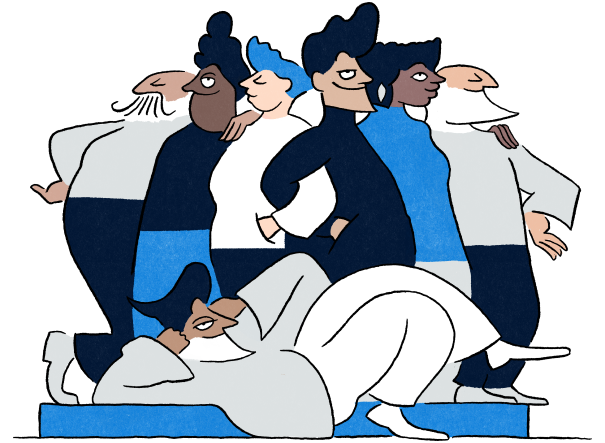A quality management system represents a way of working and leading, that enables an organisation to plan, to deliver, to demonstrate it is meeting the expectations of its stakeholders, and to solve complex challenges. It applies to all aspects of the organisation’s work – not just to quality of care – and so is better represented as ‘the management system’.
The ELFT Management System is an evolution of the Juran Trilogy.
In essence, the Juran Trilogy is a way of thinking about managing quality across all levels of an organisation. The underlying concept is that organisations must use three universal processes:
You can find out more about the Juran Trilogy and the origins of quality management here.
The Management System at ELFT represents an evolution of the Juran Trilogy that reflects the needs and structures of the organisation and those of the healthcare landscape in which it operates.
![]()
The elements of the management system shouldn’t be considered to be isolated, they are interconnected and are often utilised simultaneously or in conjunction with each other.
Good quality management will involve achieving a balance of the four elements of the system that is appropriate to current circumstances, and deploying the correct approach for any given problem or opportunity. Each require intention, design and some, but not necessarily equal, resource
In an effective management system, there will be local engagement with management processes, data driven decision making and clarity of roles and responsibilities.
The Quality Planning process helps us set goals, through understanding the needs and expectations of the end user. We can then design what we need to put in place within our operational structures and processes to achieve this.
Good planning will align local priorities and what matters most to stakeholders, with the strategic objectives of the organisation and the wider system.
The ELFT approach has evolved iteratively over the last number of years to strengthen strategic alignment, stakeholder involvement and measurement, and oversight, of progress and success.
![]()
Quality control is the means of understanding the current quality and performance of services in as close to real time as possible.
At ELFT quality control activity takes place across the various levels of the organisation in slightly different ways, but typically involves regular huddles to review quality and safety data, local decision making based on that data, and a system for escalating risks to quality and safety that cannot be immediately addressed.
Good quality control will consist of:
Quality assurance at ELFT is the range of methods by which the organisation ensures that it is doing what it should be doing, and to the required standards.
Those standards may be set for the organisation by governmental or regulatory organisations, by our service users and carers or by the trust itself.
The ELFT approach to quality assurance involves:
Quality Assurance consists of a number of core processes that all services deploy to measure themselves against basic standards of quality and safety.
![]()
For more on the thinking behind the ELFT management system
Please see the below article for more on the thinking behind the ELFT management system.
To keep up to date on the latest concerning QI at ELFT, follow us on our socials.
